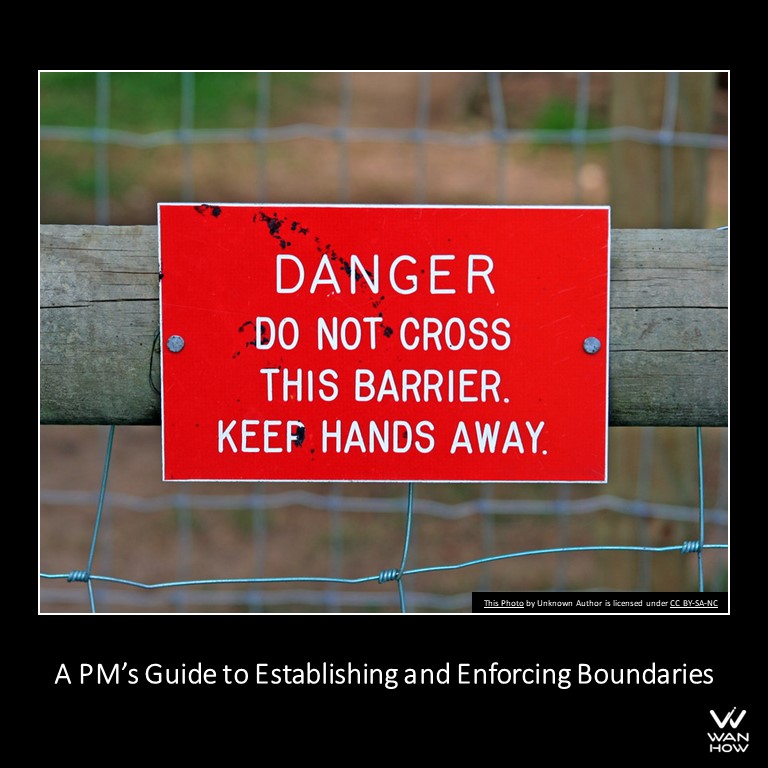
In project settings, maintaining boundaries is crucial for ensuring productivity, managing expectations, and fostering a healthy work environment. However, it’s not uncommon for project managers to encounter individuals who challenge or disregard these boundaries. In this article, we’ll explore strategies for setting up boundaries and effectively handling those who don’t respect them.
Understanding Boundaries
Boundaries in project management encompass various aspects, including time, scope, communication, and personal space. These boundaries serve as guidelines for acceptable behavior and interaction within the project team and with stakeholders. Clear boundaries help prevent scope creep, manage workload, and uphold professionalism.
Setting Up Boundaries:
- Define Clear Expectations: At the onset of a project, clearly communicate the expectations and boundaries to all stakeholders, including team members, clients, and external collaborators. Outline the project scope, timelines, communication channels, and acceptable modes of interaction.
- Establish Communication Protocols: Define how communication will be conducted, including preferred channels, response times, and meeting schedules. Encourage team members to respect designated communication hours and avoid contacting others during non-work hours unless it’s an emergency.
- Delegate Responsibilities: Clearly define roles and responsibilities within the team to avoid confusion and overlapping tasks. Empower team members to take ownership of their responsibilities while respecting the boundaries of others.
- Set Realistic Deadlines: Avoid overloading team members with unrealistic deadlines or excessive workloads. Set achievable milestones and deadlines, considering the available resources and constraints.
- Encourage Work-Life Balance: Respect the personal boundaries of team members by promoting a healthy work-life balance. Encourage them to disconnect from work during non-work hours and take regular breaks to prevent burnout.
Dealing with Boundary Violators:
- Address the Issue Promptly: When someone crosses a boundary, address the issue promptly and directly. Schedule a private conversation to discuss the violation, express your concerns, and reiterate the importance of respecting boundaries.
- Provide Constructive Feedback: Approach the conversation with empathy and provide constructive feedback on how the individual’s actions have impacted the project or team dynamics. Offer suggestions for alternative behaviors that align with the established boundaries.
- Enforce Consequences: If boundary violations persist despite addressing the issue, be prepared to enforce consequences. This may include reassigning tasks, limiting access to certain resources, or escalating the issue to higher management if necessary.
- Lead by Example: As a project manager, lead by example by respecting boundaries yourself. Demonstrate the importance of boundaries through your actions and interactions with team members and stakeholders.
- Seek Support if Needed: If you encounter persistent boundary issues that you’re unable to resolve independently, don’t hesitate to seek support from HR, upper management, or other relevant stakeholders within the organization.
Conclusion
Establishing and enforcing boundaries is essential for maintaining order, productivity, and harmony within project teams. By clearly defining expectations, addressing boundary violations promptly, and leading by example, project managers can create a culture of respect and accountability that fosters success. Remember, setting boundaries isn’t about being rigid or controlling, but rather about creating a framework that enables effective collaboration and achievement of project goals.
